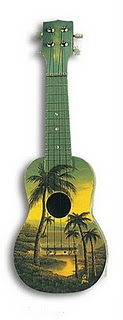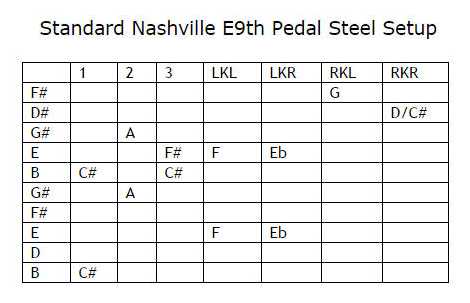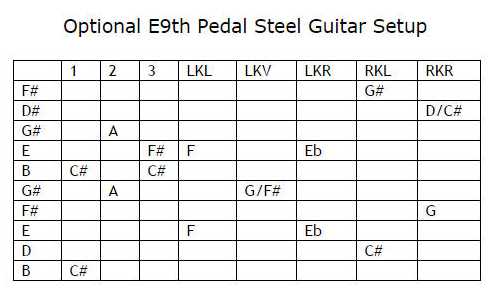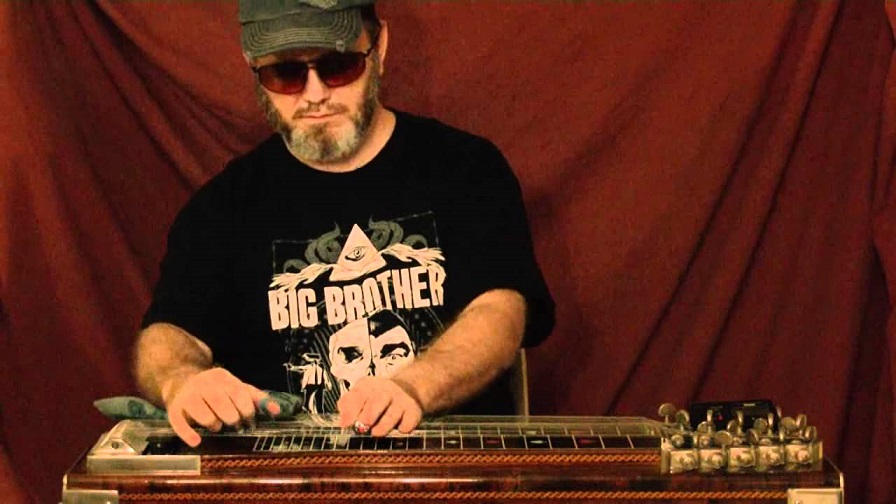 UPDATE
AS OF 2020...
UPDATE
AS OF 2020...
Wow, I went back to read this
article 5 years later, and realized how much things have changed since.
First, I gave away the Black Widow cabinets and the Peavey Profex II, so
they're history. My main amplifier that I am playing through is my old Evans
FET 15" amp, which is literally 27 years old. Wow! It still plays like new!
It's heavy though, as I never had it upgraded to the newer and much lighter
speakers. I do all my recording now directly from the steel guitar (dry)
into a Lexicon Alpha USB interface box (it cost like $30 as best I can
remember). I have been using my S-10 Rittenberry pedal steel and 1953
Rickenbacher S-6 for songs. Here's some of my recordings done recently in
2020...
I used
MixCraft software to record all
those songs. I use the pro version. I think it is a wonderful program for
working with audio. You can slow songs down, change pitch, change tempo, add
effects and adjust recorded tracts with the click of a mouse.
Written in 2015...
My heart's desire on this SteelC6th.com website is to share what knowledge I
have learned over the years, so that you won't miss out on the things that
took me decades to learn. I've been working at learning pedal steel guitar
since 1992, and lap steel since 2007. Jerry Byrd never liked the term
“playing,” and neither do I. Learning and performing steel guitar is a lot
of (although very rewarding) plain ole HARD WORK. As Jerry says in his
autobiography... You can be as good as you want to get! The moment you
become satisfied with your skills, you've reached your best.
“It is the audience reaction that feeds your soul. Add to that the
opportunity to play (and learn) all kinds of music and to to do it in a truly
laid-back manner. ... And you learn as you go - no rehearsals. It is sung
through one time, and they look at you. You play a chorus and “good luck”! Fun!
I realized that it had always been work to me because of my drive for
perfection. And here I was - I couldn't wait to go to “work” because we never
knew what would happen next.” —Jerry Byrd, “It Was A Trip On
Wings Of Music,” by Jerry Byrd (1920-2005); © 2003, p. 91.
Lloyd Green in an interview said that
he thinks about the instrument all the time, and so do I. It's important to
get the steel guitar sounds into your mind before you can perform them.
That's why I've put several hundred links to Hawaiian recordings on my main
webpage, so that you can hear what the steel guitar can do. There's a wife
variety of everything from non-pedal to pedal steel, and various tunings,
although most of it is simple C6th. (By the way, you're welcome to copy
anything from my website to yours. I want you to have and share it with
others.)
Jeffran College
(Great instruction for E9th and C6th pedal steel guitar)
If you want some excellent instructional materials to learn E9th pedal
steel, you won't go wrong with anything
from Jeff Newman. Unlike many instruction courses that don't go beyond
extreme beginners material, Jeff delves into some really challenging stuff,
and it's awesome!!! I remember years ago in 1992 calling Jeff in Tennessee
from Chicago. I was stumped how to do pick blocking. I was working on a
Woodshed Workshop course. I said, “Jeff, this 'pick blocking' is
hard.” He said, “No, it's not, you've just got to keep working at it, and
it'll come to you.” I sat back down behind my E9th pedal steel and within a
few hours the concept finally HIT ME! I've been excelling at “pick blocking”
ever since. I have Jeff to thank for that!
All of Jeff's instruction courses
come with nice quality rhythm tracks, not computer generated backing tracks.
The videos are helpful. I remember back in 1993 at the International Steel
Guitar Convention (ISGC) in St. Louis. I didn't have a lot of money left. I
told Jeff that I could only pay $100, because I needed gas money to get back
to Chicago. I offered him $100 for $175 worth of instruction videos.
Jeff looked at me, and as he so often said... “DONE!” I am still grateful
for that moment and act of kindness.
You can learn a lot of ideas for steel guitar, and hear the many different
models of steel guitar he uses, on Doug Beaumier's YouTube channel. I really
enjoy listening to him perform...
I learned from Jeff Newman (1942-2004) years ago that your brain doesn't process what
you've worked at while you're playing it, but later when you rest at night.
So don't get discouraged when your fingers get twisted in a knot while
trying to learn speed picking. Jeff taught me that if I can play one thing
fast, then I can play everything fast. It's more of a matter of familiarity
than speed. That is, once you become familiar with what you are trying to
play, then you already have the speed. If you have to think what comes next,
then that is a delay in your speed. When we hear a steel guitarist playing
super fast, like Lloyd Green on Three Picks, it sounds like he's just
playing one long run; but, he's actually seamlessly connecting a bunch of
short musical licks and phrases that he has in his repertoire. So that is
how you should approach speed picking, one section at a time, and then you
can assemble it in your mind when you perform. There is no other way to
learn. Nothing just happens, you have to work at it, one lick at a time!
Hawaiian Steel Guitar Association (HSGA)
Thankfully, the internet is an encyclopedia of knowledge for musicians
today, so definitely use it. And please share with others what you've
learned, so that the next generation won't miss out!
“Finally, don't experiment! Forget trying, or even thinking of trying, to
impress anyone with how many notes you can play in two measures. Use as few
notes as possible, but play every one with meaning and intent. You have
arrived when every person in your audience gets the feeling that you are
playing only for them. All music is, in the final analysis, is a melody with
feeling. It's not what you play, but what you say. And don't play around
either. Work!” —Jerry Byrd, “It Was A Trip On
Wings Of Music,” by Jerry Byrd (1920-2005); © 2003, p. 114.
I recommend that you listen to a
lot of steel guitar in the style that you desire to learn, and keep at it,
trying to learn from the masters. I use a cool program called “MixCraft”
that allows me to slow down anything I import or record, which is how I
learn some of Lloyd's more difficult pieces. (By the way, the way to record
anything that you hear on your computer is to run a stereo 1/8" jumper from
the "line out" to the “mic input.”) There's tons of great old Country music
videos on YouTube. Don't get into the habit of playing along without just
LISTENING sometimes. I used to just play whatever sounded close, but then I
learned to be still and just listen diligently to Lloyd's playing, and I
usually discovered that I wasn't doing it right! The most important part
about learning to play better steel guitar is to become a GOOD LISTENER!
Jeff Newman used to teach... The hardest part about backing a singer is
knowing WHEN NOT TO PLAY!
Here's some great
clips of Lloyd's work. Here's some
awesome playing by
Lloyd to sink your teeth into. At
58 minutes into the clip,
Lloyd holds string 2 down a whole tone (I think it's the 17th fret), while
rocking onto pedal A, giving that beautiful unison sound that he is famous
for. He then rocks the A pedal again and slides down on strings 5 and 6 to
fret 15. Really nice! I forget what movie I was watching, but I heard this
exact clip by Lloyd. A lot of people like it!
Brass .0225" Mini Dunlop finger picks (I use only
Dunlop brand brass picks, miniature sized for children or small fingers like mine. I just
think the shiny brass looks nicer and that makes me feel better. The regular
picks are too big and won't adjust to my finger tips without having to
overlap the edges, which is very uncomfortable, so I definitely like
miniature-sized picks. You can also order them from
Amazon, at .0225 thickness, which is fine for me. A thicker pick won't
bend while performing, so I stay away from thinner picks like .013". A
lighter gauge finger pick might be better for children, because the picks
can bend easily to fit their fingers.
Strings & Beyond
sell all the different gauges).
Jerry Byrd says...
“Music as an art form is not expressed mechanically. The artist must
communicate his emotions to those of his or her listeners, and they don't
need to know what instrument you are playing - many of them wouldn't know
what a steel guitar is - or even what song you're playing. The listener only
needs to get your message. You can send that message with music - plain,
beautiful music. Sooner or later you will realize that razzle-dazzle
technique and a big toothpaste-selling smile mean nothing. An audience will
remember you for what you said to them musically. I stress these points in
my teaching. Music is a form of psychology, and just making sounds won't cut
it. If you don't feel it, how can your listeners feel it?”
—Jerry Byrd, “It Was A Trip On Wings Of Music,” by Jerry Byrd (1920-2005); ©
2003, p. 112.
Copedents, Or Steel Guitar
Tuning Setups
Here's a
Ralph Mooney “Hits”
Medley (awesome steel guitar). Ralph Mooney didn't use the standard
Nashville tunings, which is what makes his performances so unique. I prefer
to use the standard Nashville E9th setup, because I like it, and it gives
all steel players a common standard (or benchmark) to strive for and imitate
to get started, then you can go from there if you'd like.
Above: I use a variation of
Tommy White's setup. I lower my 5th string a whole tone. This is not
standard. Tommy invented this beautiful chord change. First you press pedals
A and B (I rock onto pedal A while holding B down), picking strings 6,5 and
4. Let off pedal A and lower string 5 a whole tone. While it's lowered, let
off pedal B and then lower string 6 a whole tone. It's beautiful! Paul
Franklin's popular change lowers strings 5 and 6 together, which won't allow
you to perform Tommy's style of playing here. The only awkward thing about
the above tuning is that I have to be careful not to hit string 5 (or
silence it) when picking strings 6 and 1. One of my favorite pieces to
perform is to raise string 6 a half tone with the B pedal, while also
raising string 1 a full tone. Lloyd gets this same sound by raising string 1
a half-tone and also using a forward bar slant. Learning to incorporate bar
slants into your pedal steel playing will make your playing much more
interesting (eye candy for the viewer), and increase your repertoire.
A common reverse bar slant
used by Lloyd and Jimmy Day is to pick strings 6,5 and 4 with A and B pedals
down, and then slide the rear of the bar up two frets. So the bar is
actually spanning across three frets, and you're playing one note on each
fret.
Here's
Tom Brumley on pedal
steel, backing Wynn Stewart. It doesn't get better than this. Young
people today have no idea what really music is, and it is tragic. All this
Hip Hop garbage that they call music is nothing but prisonhouse junk.
One thing that I'd like to say
right away is CRANK IT UP! I played for years without ever really laying
into the volume pedal at high amp volume, simply because I didn't want the
neighbours to call the police on me. In hindsight, I didn't even know if
they would have. My advice is to CRANK IT UP. If someone complains, then you
can go from there. I have good neighbours presently where I am staying. They
haven't complained yet. If they ever do, then I will work with them of
course. Honestly, I'd move out if I couldn't crank it up! I need to play
loud, like a bird needs to fly. I'm not saying that you should blow out your
windows, but if you've never really cranked up your volume to 7 or 8 on a
100 watt amp with a 15" speaker, you're missing out my friend. You will
never be a good musician until you can “feel” your music. Let me put it
another way...
When I started driving a car at
age 16, my friend taught me took me in an empty parking lot in
Chicago, after it had snowed. He told me to get going about 25 MPH and slam
on the breaks, going into a spin. He then told me to do 360s, and I was
spinning in circles around the parking lot, maneuvering the vehicle. That
was so helpful! My friend told me that I needed to control the car, and not let it
control me, or be afraid of it. That's what I'm trying to teach you, it's
the same with the steel guitar. When you crank it up, you get to feel the
major chords (and I love that cool crisp sound). I was blown away the first
time I was able to play in a large auditorium, and cranked it up as loud as
I wanted. I realized that a lot of the awesome sounds that I heard steel
players making at the annual International Steel Guitar Convention in St.
Louis is because they CRANKED IT UP! Lloyd Green in particular, sounds
completely different live than he does in the studio. The reason why is that
in live performances you have the dynamics of sound involved. The same is
true with one of my favorite steel guitar artists, Leonard T. Zinn.
Jerry Byrd On His Life And Career...
And A Song, “The Kilima Waltz”
|
Part 2, “Waipio”
You'll never learn new things
unless you let go and try new stuff. In the previous videos Jerry Byrd
(1920-2005) is performing on the E9th neck. I encourage you to order some of
Jerry's E9th tabs from Scotty's Music and then incorporate them into your
pedal steel playing. You'd be amazed at some of the things you can play on
the E9th, that you'll never see in any pedal steel instruction course.
Everything that Jerry is playing in the preceding video can be performed on
the E9th pedal steel (without the pedals of course).
Also, by learning the bar slants,
you'll gain a good understanding of how the Nashville E9th pedal setup was
developed. If you watch Lloyd Green performing (such as the song “Wine”
with Peter Cooper), you'll notice that Lloyd often uses bar slants, which is
an integral part of his very unique sound. By learning to do bar slants and
incorporating them into your steel guitar repertoire, you'll break away from
the run-of-the-mill common sounds (which are fine to play) that everyone
else plays (which becomes mundane after a while).
That's what made Bobbe Seymour's
(1939-2011) steel guitar playing so refreshing, he really raised the listener's
eye-brows with the awesome unique things that he played (that no one else
played). Bobbe was a true artist, creating his own unique sound! Here's a “Bobbe's
Tips” page with lots of helpful steel guitar advice, and tips on getting
the best tone.
From my own experience, I've
learned that the best tone comes from three things:
-
A GREAT PERFORMANCE (SOURCE).
To get a very good tone you must have a very good amp (in
general the larger your speaker, the better your tone). Although guitars all
sound different, the biggest contributing factors in my opinion are wood
verses mica, and the brand and resistance of the pickup. Mica is more
muddled than wood. The mica covers the wood, and covers the brightness too;
but by adjusting the tone knobs on the amplifier you can compensate for this
largely. My Rittenberry S-10 mica with aluminum neck sounds great through a
Peavey Nashville 112 (one 12" speaker). Albeit, my Sho-Bud D-10 and S-10
sounds awful through the Nashville 112 in my opinion. They surprisingly
sound good through a Fender Princeton Reverb with a 10" speaker. Just as
beauty is in the eyes of the beholder, so also is tone in the ears of the
listener. Tone is the connection between the soul of two people musically.
Making sounds is not tone. I've heard much steel guitar performances that
were beautiful, but didn't move me because the tone wasn't there. Listen to
this beautiful recording of Lloyd Green from the 1995 Super Jam in St.
Louis, the song
Sweet Memories. You'll hear Hal Rugg first, then Jimmy Day, then Lloyd.
Lloyd's playing is superb, which always inspires me. You can hear his
wonderful pick attack on the strings. He plays with attitude, intensity,
elegant yet profoundly simple, which is beautiful artistry. Unlike most
players who have a laidback approach to playing, Lloyd takes charge! I've
never heard a steel player whom I did not admire, just because I love the
instrument, but Lloyd is my favorite artist. Notice that his sound is not
muddied, but bright and clean. There's nothing worse than a steel player who
sounds like he's buried behind a ton of effects which drown him out, or make
him sound muddled. I avoid effects. I set my reverb on 3 to 5, depending on
the amplifier. For Hawaiian songs like Bali Hai or Moon Of
Manakoora I don't use delay at all, and I set my reverb a little higher.
I only use a little delay from a Boss DD-3 or DD-7 pedal, set to the tempo
of the song. I was sitting there recording Jeff Newman's “Super Jam” at the
International Steel Guitar Convention in 1995 (you can
hear and download the recordings here),
and it is a lifetime gift to me. Still, nothing can imitate being there
live, because of the dynamics of the amp, room, everything. It is very
difficult to convey great tone in a recording, but Lloyd does it! I thank
God for the recordings of the event.
-
A GREAT RECORDING (PRESERVATION).
The old analog recorders I think were much better than today's digital
handheld recorders. Digital chops off the highs and lows. I'm no expert on
sound or recording, but I've listened online (see YouTube) to comparisons
between analog and digital, and hands down analog is warmer and sounds
better. So my 1995 analog recordings of the Super Jam are a blessing not to
be digital. For a standard cassette recorder, it did OK. I've learned when
recording live events to walk up and play my recorder close to the steel
guitar amplifier, to eliminate unwanted people talking and not getting a
good tone. I attended the 1994 Hawaiian Steel Guitar Convention in Joliet,
Illinois. I made the mistake of not placing my cassette recorder close to
the amp and you can hardly hear the steel guitar (so little so that there
not even worth sharing or I would). Bummer! If you attend a steel guitar
concert, and really want to record it, I highly recommend using multiple
recorders in different locations (and swap contact information with other
enthusiasts that you see with a recorder and offer to exchange recordings
later on).
-
A GREAT SOUND SYSTEM TO HEAR IT
(AMPLIFICATION). If you listen to a
recording on a cheap mini-speaker, you won't hear good tone. Ah, but if you
have a really nice stereo surround sound system with a bass woofer, and
crank it up, then you will hear great tone (if the source and recording are
good). So in order to have great tone, you'll got to have a great source, a
great recording, and great amplification at home or in your car. I love
Lloyd's playing, the source is great. The recording is surprisingly good for
an analog tape. And when I crank up the volume on a nice sound system, I'm
on cloud 9.
I've noticed that today's steel
guitarists don't have near the skills and techniques of the older steel
players during “The Golden Years (between 1947 and 1972). In his
autobiography, Jerry Byrd says The Golden Years ended in 1972 when music
became commercialized (money, money, money). Paul McCartney attributes
fighting over money (through their lawyers) as the cause of The Beatles
breaking-up as a band in 1970. In the old days, music quality still meant
something. Jerry says in his autobiography that between 1935 to 1940, steel guitar was king!
Boy, would I have loved to live at that time! Today, the word
“stereophonic” means nothing, and digitalized music quality is cheap. We've
really lost so many beautiful things in America, like the arcade games of
the 1970's and 1980's. I loved those table-top Pacman consoles, where you
could sit and eat/drink while playing a video game. I still remember playing
Ping-pong on TV at home. Cool! It was a fun, clean and innocent time in our
nation. And music was so much better back then. I remember walking down to
the local shopping mall and looking through all the LP33 records. I miss
that! I think the vinyl LP records sounded so much more realistic in the
stereophonic record-players. I had hundreds of records, including 78 RPM
Hawaiian oldies.
I had the 1970 33 LP of “Twin
Steel Guitars” by Kayton Roberts and Little Roy Wiggins. I wore out the
record! Here's some
cool weird stuff that Kayton teaches can be done on the steel guitar.
Here's a cool video performance of the song “Mapuana”
(a favorite Hawaiian tune) by Kayton Roberts. You can pick-up a couple dozen
really cool techniques from watching and listening to him here. Check out
those tone-knob swells
(he uses a foot volume pedal on the floor), bridge muting, bass thumping,
horn sounds, harmonics and other neat techniques! Kayton uses the C6th
tuning with two A notes on octave apart on strings 7 and 8. I have
Kayton's tunings listed on the tunings
page. Kayton is a born-again Christian and he really enjoys cheering people
with his steel guitar music and having a fun time!
That's awesome! Kayton performed
on the Grand Ole Opry, backing Hank Snow for 31 years. Here's a
2014 interview by
melbay with Kayton Roberts (notice in the interview that Kayton
pulls the 2nd string to raise it with his 3rd finger... you can do much with
that technique (on the C6th, open fret, it gives you an A major triad on
strings 1, 2 and 3 or A, C# and E). Try pulling different strings to form
additional chords. I use all three fingers (sometimes one or two, depending
how tired my fingers are), which makes it much easier to raise a string. You
pull the string with your left hand from behind the bar. I love Kayton's
energetic personality, which is a big part of his unique steel guitar style.
He really gives it his all! Here's
Kayton's website.
I used to often reach up on my
E9th neck and give a slight pull to the first string to raise it. Then I got
used to using a knee lever to raise string 1 a whole tone. Try using your
pinky to pull string 1 a half or whole tone, it impresses a close-up
audience if they can see you do it. A big part of being a successful steel
guitar artist in public is being an entertainer. I love watching Bobby
Ingano, he's quite an entertainer, making bird sounds, whipper-whirls,
whistle-calls, and violin sounds, et cetera. The best steel artists don't
use hardly any effects. Check out this cool song called, “Kayton's
Junkyard” on the C6th.
I
use the standard E9th pedal steel setup (3 pedals and 4 knee levers). I use
the "Emmons setup" (for Buddy Emmons), i.e., ABC pedals (A raises strings 5
and 10 a whole tone. The less common setup is reversed, known as the "Day
setup" (for Jimmy Day), which has the pedals arranged CBA instead.
Tommy White, Weldon Myrick, and Jeff Newman use the Day setup. I've always
used the Emmons setup, as do most players, including Lloyd Green. There's a
reason for the difference. Some people experience knee pain with a
particular setup and switch to the other. I once spoke with Tommy White
about knee pain and he told me that moderate gym exercise helped remedy the
pain. I have found the same to be true. It's a good thing to remember if
you play steel a lot and experience pain. The other thing you can do is
change your knee lever positions. Since the knee that lowers the E's is used
frequently, some players move it to the right leg.
Also, due to permanent nerve
damage in my neck, I have discomfort in my left knee while playing, so I
wear a leg-support made by ACE (available at any Pharmacy). The leg-support
has two Velcro straps, one above the knee and the other below. I always wear
it while performing. It's thin enough so it doesn't interfere with
knee-lever spacing.
In 1965, Johnnie Wright (1914-2011)
sang a patriotic song called, "HELLO VIETNAM."
Here's the original song.
Here's me
playing along with the song, adding E9th pedal steel guitar. The song
has a great intro, but then there's no pedal steel for the rest of the song.
So I played E9th pedal steel and recorded it for you to hear. I hope you
like it. Believe it or not, I'm using the "REC OUT" on my $125 Roland MicroCube amp, going through a
Lexicon USB interface, and recording on my computer with a software program
called "MixCraft" (basic version). I'm only using the reverb on the
MicroCube amp. Enjoy!
To let you hear the difference
between direct recording verses miking a live amp, here's a recording that I
recently made of a Gospel song titled, "I've
Been Through Enough." On this song I used a Nashville 112 amp, and a
RODE condenser mic. I ran a BOSS DD-3 delay through the "Pre EQ Patch" (I
absolutely hated running it through the "Post EQ Patch" circuit - the sound
was horrible!). You have a choice on this amp, with a "Send" and "Return"
1/4" jack for each circuit. The Nashville 112 is a nice mid-size amp (with
one 12" speaker, hence, "112"), but if you are new to pedal steel, I
recommend that you buy an amp with a 15" speaker to start. The bigger
speaker gives you a sweeter bottom tone.
I also have an older FET 500 Evans
amp (it weighs a ton). The newer Evans amps use a different speaker material
and are considerably lighter. At lower volumes it really doesn't matter
between 12" or 15", but when you crank it up, you want the 15" speaker in my
humble opinion. That's all Lloyd Green uses as far as I know, that is, a
JBL 15" speaker, which is what I have in my dinosaur Peavey
Session 400 amp. I like the JBL speakers a lot. I don't like the sound if
the Eclipse speaker in my Evans, so I use the "External Speaker"
output and run the signal through a Black Widow in a cabinet that I
got years ago from Tim Cushionberry. I like the sound better. Granted, I'm
not an expert in sound. I would love to try all the speakers and amp
combinations if I could, but that's not possible for most of us. So we
really rely upon the opinions of other pedal steel guitarists (which vary
greatly). One thing that I have learned is that the only way to really test
an amp is to CRANK IT UP! At low volume they all pretty much sound the same
to me.
Here's some awesome stuff that you
won't find anywhere, guaranteed. I claim no originality here, I learned most
of this listening to
Lloyd Green's records and live performances. Most
people don't know that Lloyd is left-handed, but plays a right-handed steel.
Cool, huh? Lloyd's the best!
The dash symbols “~~” in the
following tablature means to let the notes ring. If there are no dashes,
then stop the notes from sounding. The “~”symbol prior to a note means to slide up into the
chord. There's some fairly advanced stuff in here, so don't get discouraged
if you get stuck, just take a break and come back at it later. I learned
from Jeff Newman that you
absorb more while not playing than while playing, because that's when your
mind gets rest to process everything.
I finally got around to recording
most of these parts, so you can hear them, which is necessary to learn them
accurately. My $500 Peavey Nashville 112 has a hum (white noise) from the
"pre-amp" out. I have no idea why. I don't use it for recording anymore, but
I used it for these E9th clips. I really like the amp, but NOT for
recording. The $125 MicroCube is much better (and no hum) for recording, go
figure. There's some really cool stuff in here to learn.
 UPDATE
AS OF 2020...
UPDATE
AS OF 2020...




